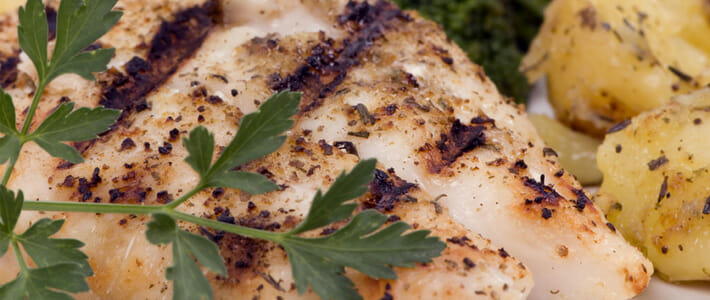Snapper, Lane

The lane snapper is rose with a faint greenish tint on the back and upper sides, which reveals several obscure, vertical dark bars. A series of 8 to 10 horizontal yellow stripes traverse the lower sides, and a dark lateral spot, larger than the eye, is located below the soft dorsal fin, just above the lateral line. The position and size of this mark, in addition to an anchor-shaped tooth patch on the roof of the mouth, 18-22 gill rackers on the first arch, and a rounder anal fin, separate the species from its close relatives.
Product pdf for download-
3 oz (100g) raw edible portion
-
Calories 85
-
Total Fat 1g
-
Saturated Fat 0g
-
Cholesterol 31mg
-
Sodium 54mg
-
Carbohydrates 0g
-
Protein 17g
Alternatives
Other snappers.
Source
The lane snapper is abundant in South Florida (specifically in the Florida Keys), extending down into the Caribbean and east into the Bahamas.
Harvest Method
Lane snapper are generally caught on hook and line, and are considered to be more aggressive and easier to catch than most of their snapper counterparts, as they tend to be less wary of hooks and lines.
Spawning Season
Lane snapper spawn from March through September. They are sexually mature at 6 inches. Lane snapper feed on the bottom, eating crustaceans, mollusks, and fish.
Flavor
Mild-flavored, tasty white meat.
Texture
Flaky texture.
Preparation
Baking, broiling, frying, grilling, ideal for any preparation.
Market Segments
This fish is appropriate in the casual dining, fine dining, hotel, and resort/club segments of the market.